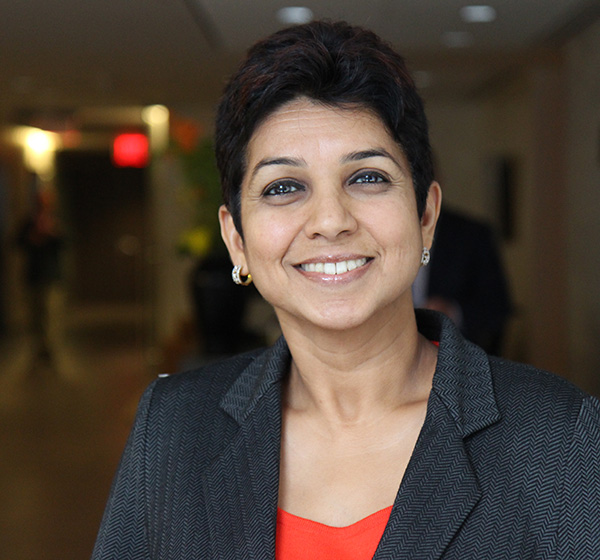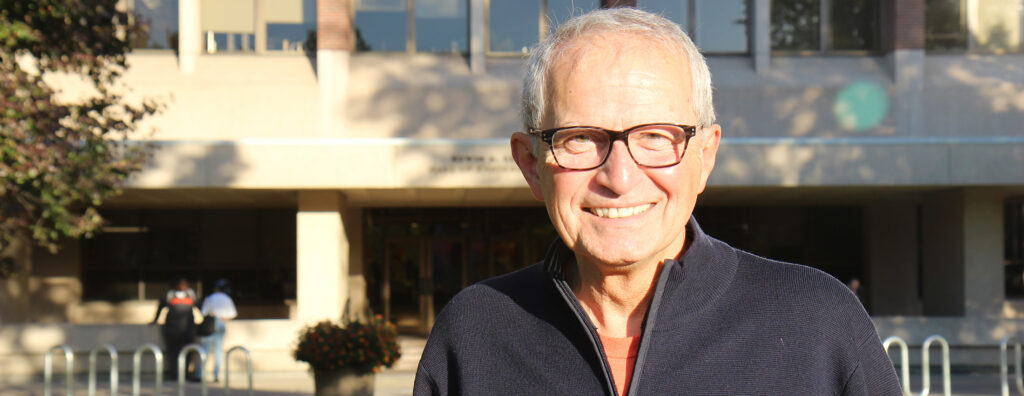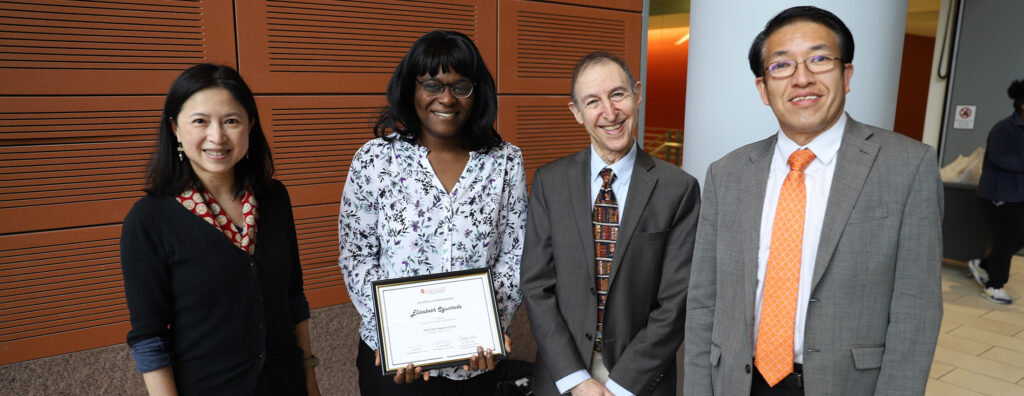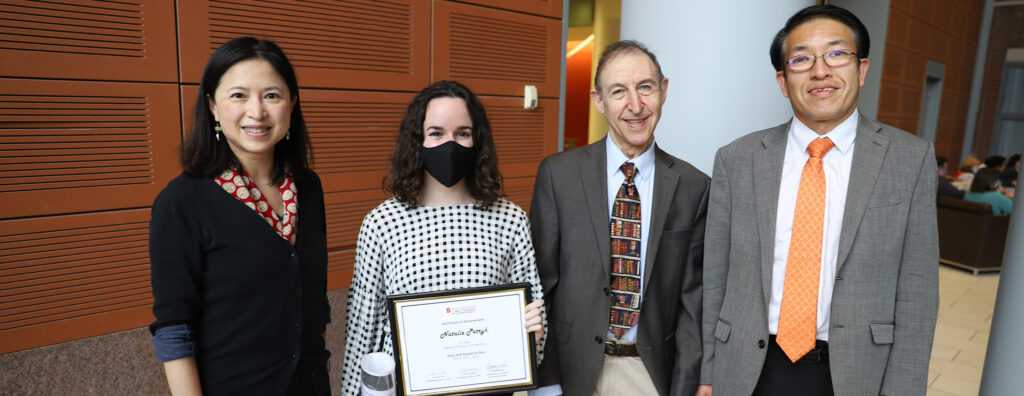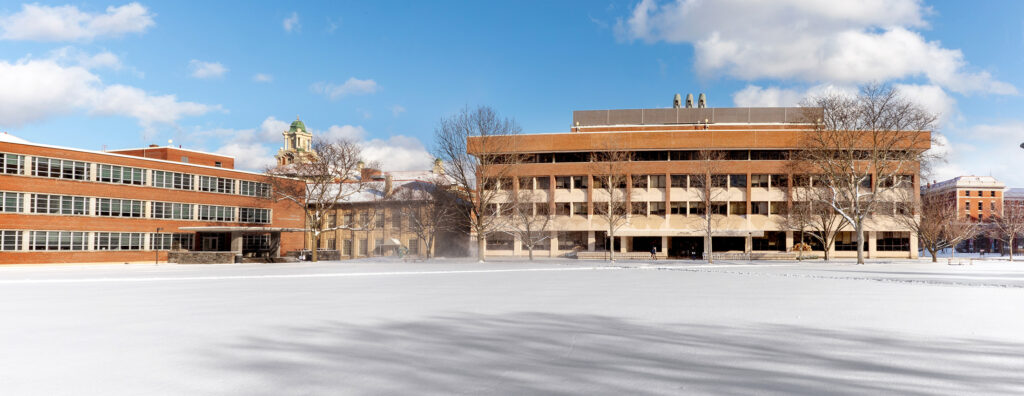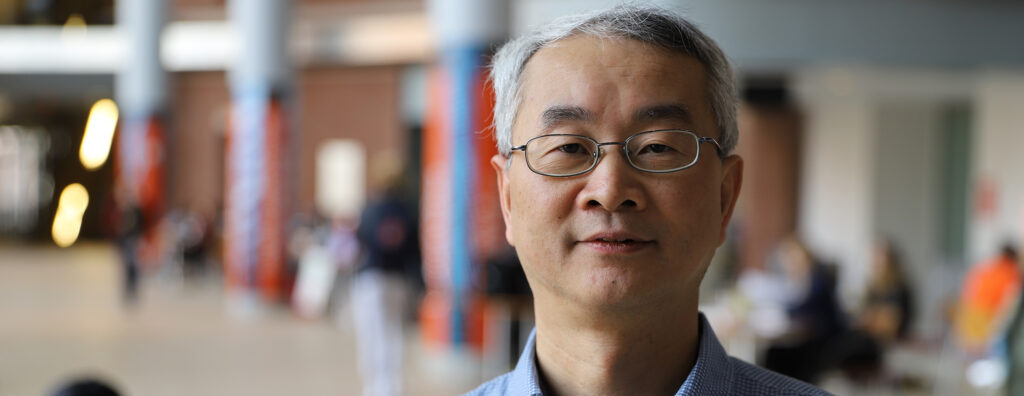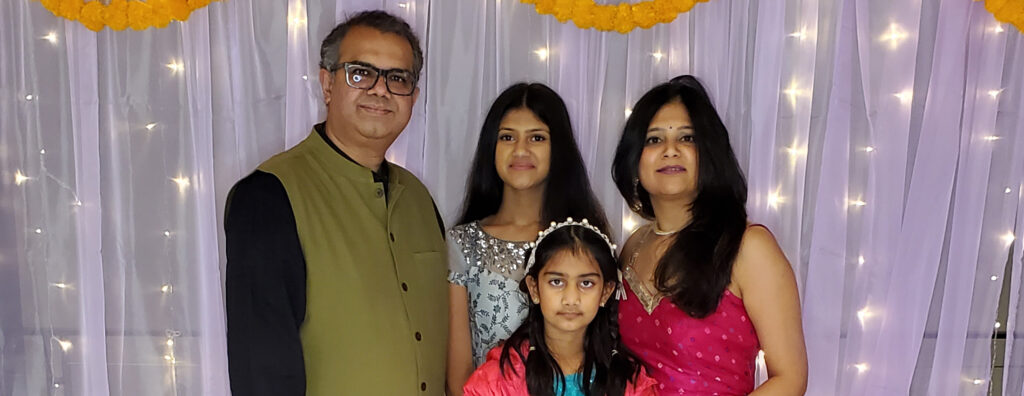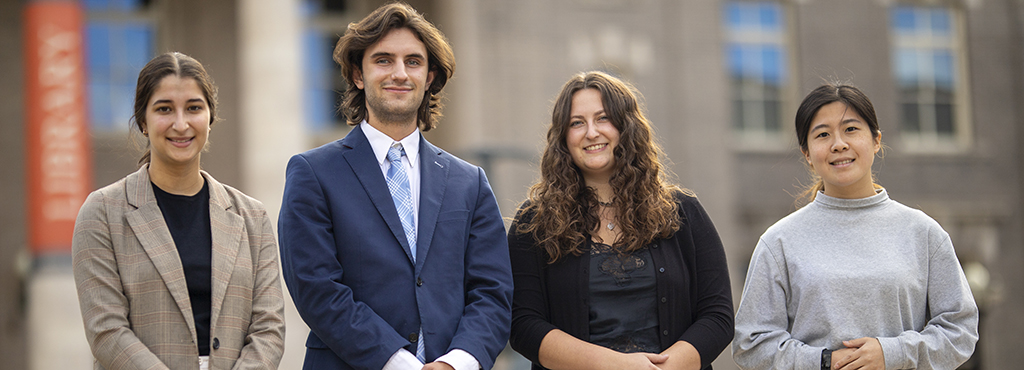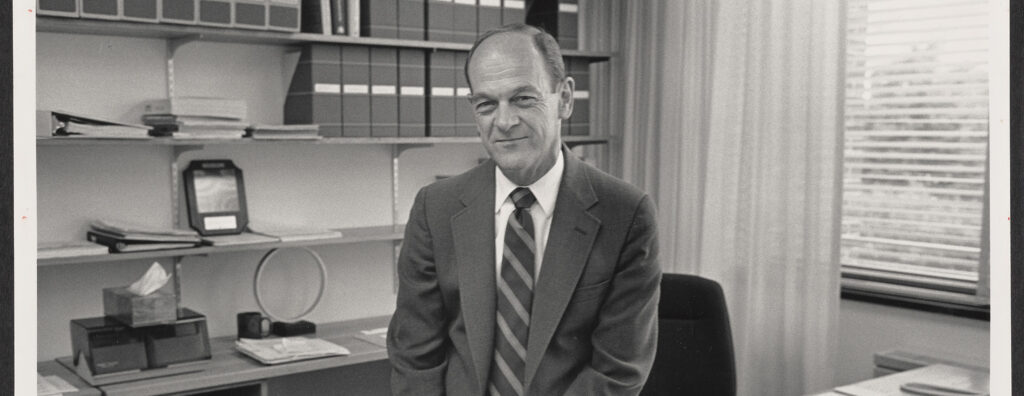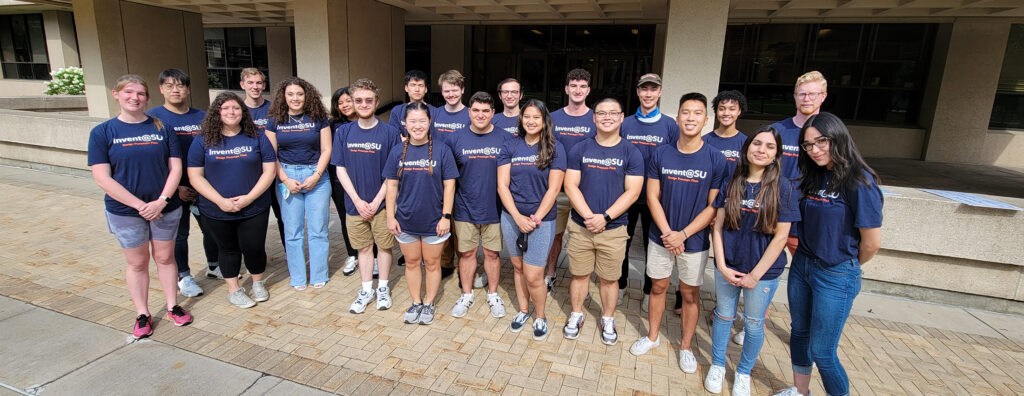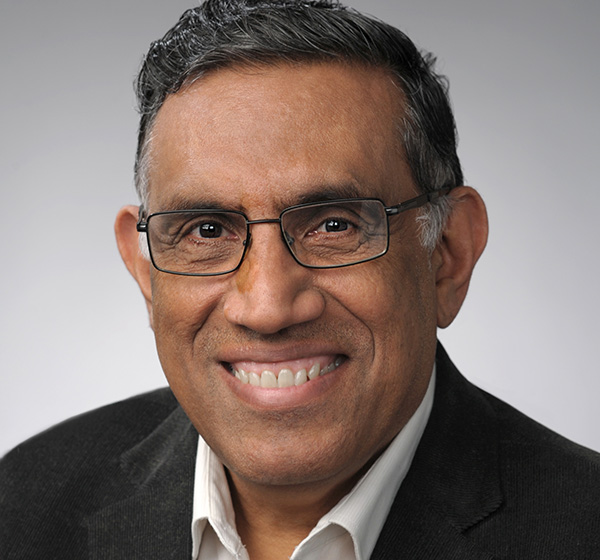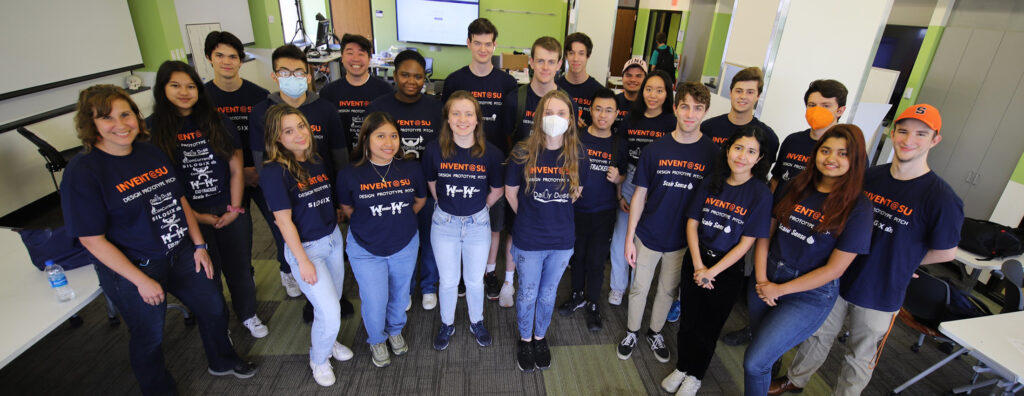
When searching a burning building for people who may be trapped inside, smoke and debris can cause firefighters to work in zero visibility conditions. They are attached to ropes but it is easy for them to become disoriented. This makes it difficult to navigate their way back to safety.
Environmental engineering student Oliver Raycroft ’25 heard about the problem from a firefighter during his first year at the College of Engineering and Computer Science and started thinking about ideas.
“I thought the problem was interesting and there was a clear need,” said Raycroft. “I wanted to help and find a solution.”
At the beginning of the six week Invent@SU program, Raycroft presented the problem to his teammates biomedical engineering student Alejandra Lopez ’22 and computer science student Adya Parida ’25. Both were interested in seeing if they could use their science and engineering skills to design a practical solution that would help firefighters orient themselves during rescue operations.
“If we could solve this problem, we could save the lives of firefighters and billions in damages,” said Parida.
During Invent@SU, student teams design, prototype and pitch new inventions with help from engineering and communications faculty. Each student receives a $2200 stipend and teams have a $1000 budget for prototyping materials. Teams spend six weeks developing their ideas during summer session one and each week a panel of Syracuse University alumni and friends evaluate the progress of their five-minute pitches.
“It was a combination of experimentation and feedback. This program taught me skills I can apply anywhere,” said Parida.
“I got better and better at presenting and communicating what we were working on,” said Lopez.
“The fact firefighters liked it so much made it worth it,” said Parida.
On the final Thursday of the program, all seven teams in Invent@SU pitched their inventions to a panel of alumni judges. Raycroft, Lopez and Parida’s team named “Scale Sense” took first place and a $1500 prize.
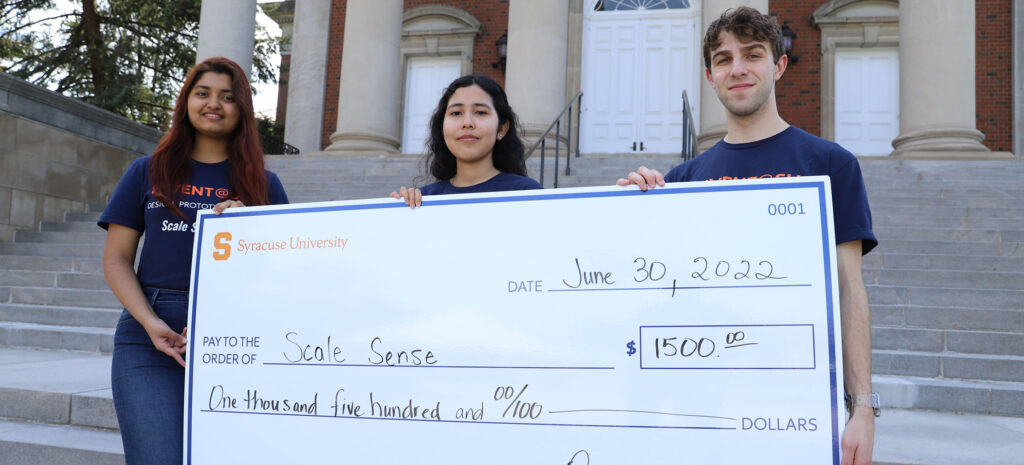
Second place went to team “Wonder Walker” who designed a mobility assistance device for children with special needs.
Third place went to team “Silogix” – who designed a device to provide farmers with a way to prevent dangerous grain blockages in silos.
“It was a ride, it was fun, challenging and rewarding,” said Parida.
Several Invent@SU teams plan to work with the Blackstone Launchpad in Bird Library to explore business plans and patents.
Invent@SU was made possible by program sponsors Syracuse University Trustee Bill Allyn G’59 and Janet “Penny” Jones Allyn ’60 and Michael Lazar G’65. The 2022 team sponsors were Matthew Lyons ’86, Haden Land G’91 and Cathy Jo Land and Ralph Folz ’90. For more information on the program, visit invent.syr.edu.



